Zwetschgendatschi is a German Plum tart dessert that my Bavarian Mutti made for as long as I can remember. This dessert is as traditional to Bavarians as apple pie is to Americans. The non-yeast crust is tender and buttery. Italian prunes (sometimes called Empress Plums) are seasonal autumn fruits. The fruit is seasoned with cinnamon-sugar and then baked. The yellow flesh turns into a beautiful purple color and are both sweet and tart. I look forward to making this Bavarian dessert every year!
BEFORE IS SHARE THIS RECIPE: There is another version of this recipe that uses a yeast dough, made with milk. Our Bavarian roots prefers a buttery tart dough, so this is the version that I make.
That’s a mouthful of a recipe name, isn’t it? “TCH-VENCHKEN-DATCHI” is as close as I can get to teaching non-Bavarians how to say that word. German Plum tart is probably a lot easier to remember.
My Bavarian Mutti made this dessert for as long as I can remember. This dessert is as traditional to Bavarians as apple pie is to Americans. To keep things authentic, I wait until August– when I call my local produce store and ask “do you have Italian prunes in stock”? I hold my breath– and I feel a sense of joy when the answer is “yes”.
Italian plum/prunes have a very short season– pretty much between August and September. Last year, I waited too long, and there were none to be found.
This year, I got really lucky! Craig and I drove 90 minutes to Los Altos Hills to visit my Bavarian cousin. Her Italian plum tree was full of ripe fruit– ready for the picking! (The pink ribbons is an effort to keep her neighborhood squirrels from stealing her fruit.)
She generously filled a big bag full of those precious fall fruits, so I could go home and make my own Zwetschgendatschi.
These two “cousins” (left and right of me) are 100% authentic Bavarians and haven’t lost their spunk being 95 and 80, respectively! They are very active ladies, with a hilarious zest for life.
I understand the Bavarian dialect, quiet fluently– though I admit that not being able to speak the language as I once did, with my Mutti, has left me a bit rusty. Listening to two of my cousins, chatting away in Bavarian, kept me laughing and loving the dialect– the language is music to my ears, having grown up with it until my mother passed away in 2002. Craig and I are headed to Bavaria and Austria in October, and we plan to stay in my mother’s hometown of Bad Reichenhall, Bavaria. I’m getting super excited about revisiting the city where I lived, as a very young child, for a few years.
After several fun-filled hours of enjoying a “Brotzeit” of Bavarian sausages, potato salad and beer, and a heaping plate of her delicious version of Zwetschgendatschi– we headed home with my precious plums. I could hardly wait to get started, the next morning!
One thing that the three of us agreed on, is that they much prefer a buttery tart-like dough, versus the more traditional yeast based dough. I used my cousin’s recipe for the tart dough, from her German Apricot Rahm Kuchen recipe that I posted a few years ago. It’s a little fussy to work with, since it has egg yolks in it– but it’s so worth making. It’s tender and buttery… I’m drooling, just thinking about it.
I used a quarter-sheet pan to bake this dessert. I had a few jars of homemade Kadota fig jam, and I like to spread a little just to help prevent a soggy crust. (You could use apricot jam, too.)
NOTE: I like to put parchment paper underneath, to help remove the slices more easily.
I kept the crust in the refrigerator and preheated the oven to 400F, while I prepared the fruit.
My mother always cut each plum in half, not quite cutting through. She’d remove the seed, and cut each half into quarters– again, not slicing quite through. This created a “fan” of plums. You can certainly quarter them all the way through, but some childhood habits are hard to break– as in my case!
Down to the home stretch… fill the crust with the fruit…
Generously brush with melted butter…
Generously sprinkle with cinnamon-sugar. Don’t be shy!
Bake at 400F for 30-40 minutes, or until the crust is a golden color. Sprinkle with additional cinnamon sugar. Allow to come to room temperature for at least 30 minutes.
This tart is ideal served at room temperature– or just slightly warm. Incredible!
Please, whatever you do, make fresh whipped cream! It’s a traditional garnish that goes hand-in-hand with this dessert, and helps to balance out the tartness of the fruit.
This is a childhood memory that brings me back to that moment in time– that blissful first bite of plum– just a tad bit tart, tangy, and then sweetened by the cinnamon-sugar. The pastry… oh, the pastry… it’s tender, and flaky, and buttery…
TASTING NOTES: I wish my mother was alive to have a taste of her recipe that I think would make her proud. I have leftover plums that are begging for me to make another batch. As soon as I post this recipe to share with all of you, the aroma of cinnamon and spice will be wafting from my oven. I never tire of this dessert. I hope you can find these plums, and that you will try this recipe. If I’m lucky, I’ll find this dessert on a menu while we are in Bavaria. I’ll be looking!
A few years ago, I shared a shortcut recipe on making a “cheater pie” or galette with this fruit. You can view that recipe here.
Bavarian Zwetschgendatschi – German Plum Sheet Cake (Tart) Recipe
Equipment
- 1 sheet parchment paper
Ingredients
Crust:
- 7 ounces flour about 1-1/2 cups
- 5 1/2 ounces unsalted butter melted and cooled
- 3 ounces sugar scant 1/2 cup
- 2 egg yolks
- 1 package vanilla sugar or 3/4 teaspoon pure vanilla
- Zest small lemon or to taste
For the plum topping:
- 12 Italian prunes up to 14; in season only in Aug-Sep NOTE: Stanley Plums is another name for the prunes. Regular plums aren't the best substitute.
- 4 tablespoons butter melted
- 1/4 cup fig jam or apricot jam (optional)
Cinnamon-Sugar
- 1/4 cup sugar
- 2 tablespoons cinnamon
Instructions
Crust:
- Whisk together all of the dry ingredients and the lemon zest (the zest is optional, but I love the flavor it adds).
- Create a well in the middle and add the egg yolks (and vanilla, if not using vanilla sugar), lemon zest and the butter. Knead with fingers to combine. Using the heels of your hand, knead until all the ingredients are combined.
- Optional: I use my food processor, and use short pulses to combine– careful not to over mix.
- Generously flour the surface of the counter and the rolling pin, so the dough won’t stick.
- Roll into a rectangle shape, to fit the quarter pan sheet. Place the parchment paper on top of the dough, set the pan on top and flip.
- (Some of the dough will break apart, but just piece it back together with your fingers. Chill in the refrigerator while you prepare the plums.
For the plums:
- With a paring knife, cut along the “seam” of each plum, then pull the fruit apart, removing the seed. I prefer to cut each half into quarters, not quite all the way through– so that the plums fan into four pieces (it’s the way my mother taught me, and it’s how I continue to do it).
- Remove the crust from the fridge, and spread an even layer of jam. This step is optional, but I find that it helps to prevent a soggy crust.
- Begin layering the plums in even rows, overlapping them a bit, as they do shrink while baking.
- Brush melted butter over the plums and then generously sprinkle with cinnamon sugar.
- Bake at 400°F for about 30 to 40 minutes or until the edges of the crust are a golden brown, and the plums are golden and bubbly.
- Sprinkle an additional 2 to 3 tablespoons of cinnamon sugar.
- Allow to cool, ideally, until to room temperature. Serve with a dollop of freshly whipped cream (or vanilla ice cream).
Notes
Nutrition


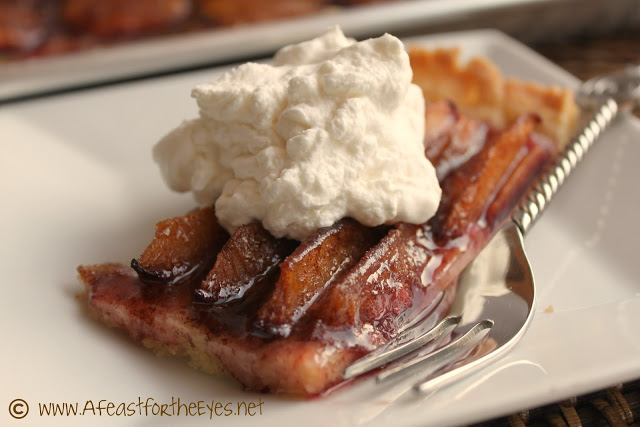
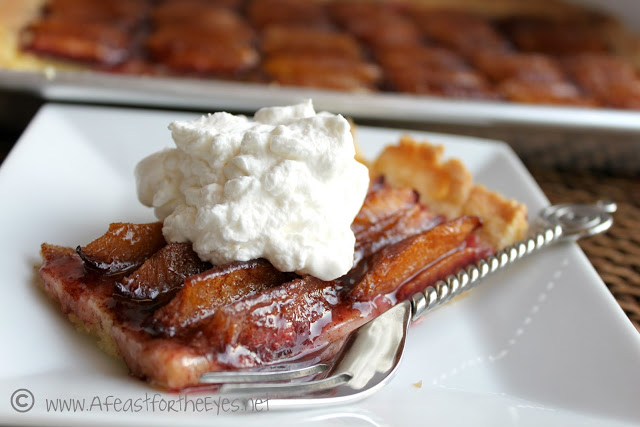





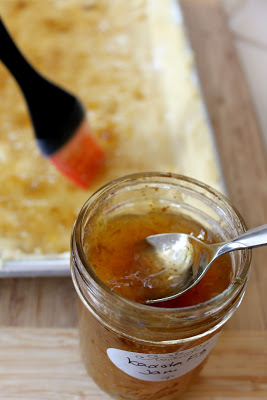
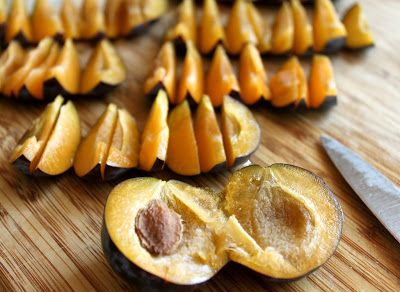
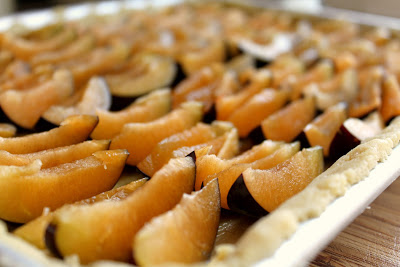

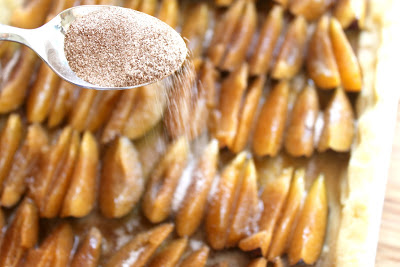


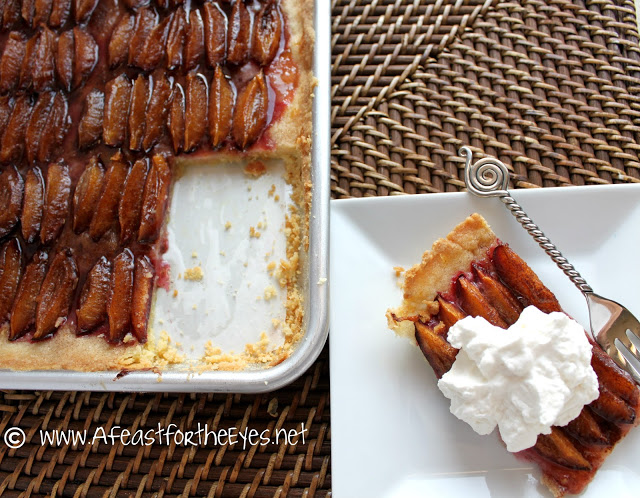
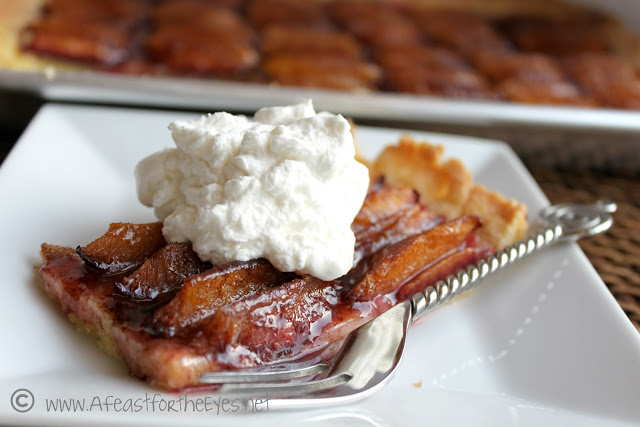



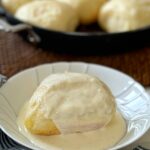


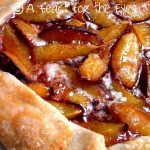
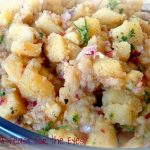

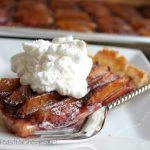
I was wondering where you'd been. I've missed you and all your beautiful pictures and also your drool-worthy descriptions of everything. Welcome back!
Adrienne
Thank you, Adrienne. I'm glad I haven't lost ALL of my followers! I have plenty of recipes to post…I just need to make time for it.
I remember years ago my coworker kept telling me about how good her German mother's plum cake was and how I really needed to try it. One day she brought me one. It was a round tart rather than a rectangular one like yours, but it was delicious and I was happy my husband doesn't like plums because I kept it all to myself. I don't work with my old friend anymore, but now I can make this myself!
Bavaria is the part of Germany I most want to see. Thanks for giving me a taste (literally and figuratively) of it.
Each year I wait with anticipation for the arrival of the Italian Prunes. This recipe serves them all the radiant appreciation that they deserve. What a way to send out the end of Summer. I always make a point to purchase them in quantity so that I can make several batches throughout September, sometimes lasting until even October! What a joy to work with this recipe. The dough is tender and delicious, it adds just the right amount of sweetness to the overall dish. By far one of my favorite recipes, I look forward to trying the cake next time.
Thank you so much! I am so grateful that my cousin taught me how to make this. Craig looks forward to it, each year. xoxo
This is the recipe I’ve spent 36 years looking for! I fell in love with this tart when I spent six months in Munich in 1984; I had it every chance I got! Once I returned to the States, no one had even heard of it here. Seven years ago I found recipe on NPR but it wasn’t quite right and never matched my memory of the Zwetschgendatschi I had in Munich. Your recipe ticked all of the boxes for me! Thank you so much for giving me a touchstone to a time in my life I look back fondly on!
Oh, thank you for letting me know. Every fall, I anxiously scour places that have Italian Plums for sale. They are fabulous. Thank you for stopping by.
you really need to work on your instructions for makeing the dough. apparently you don’t use a yeast dough. when you state mix dry ingredients it is only the flour and sugar. Then you say add the egg(when you should say add the egg yolks) you say nothing about the butter and if it is melted and added with the egg. you have to mix all the ingredients well before you can put the dough onto a floured board to kneed it. You leave out this step. with your ingredients i don’t see how your dough will rise when baking. you might want to make corrections to your instructions. This cake is generally made with a sweet yeast dough as i have made it several times. learned how from my grandmother who was dirgectly from germany.
Your critique is rather interesting. Did you read my post? I think not. I wrote “One thing that the three of us agreed on, is that they much prefer a buttery tart-like dough, versus the more traditional yeast based dough. ” Therefore, there is no need for yeast in this recipe. I make this recipe every year, and it always turns out the way it should. Anytime I share a recipe from my Bavaria, the critics come out with their opinion on how it should be done. I’m sure there are lots of variations, but mine is one that works and I’m sticking to it.
also noticed that the only liquid that you have is the egg yolks so it is just flour, egg yolks and sugar. mixed together to make a dough not much of a dough. were is the milk salt and yeast? for your dough.
I responded to your critique on your previous post. I’ll send you a private email. It amazes me how rude people can be on social media. Wow.